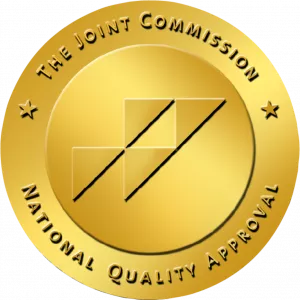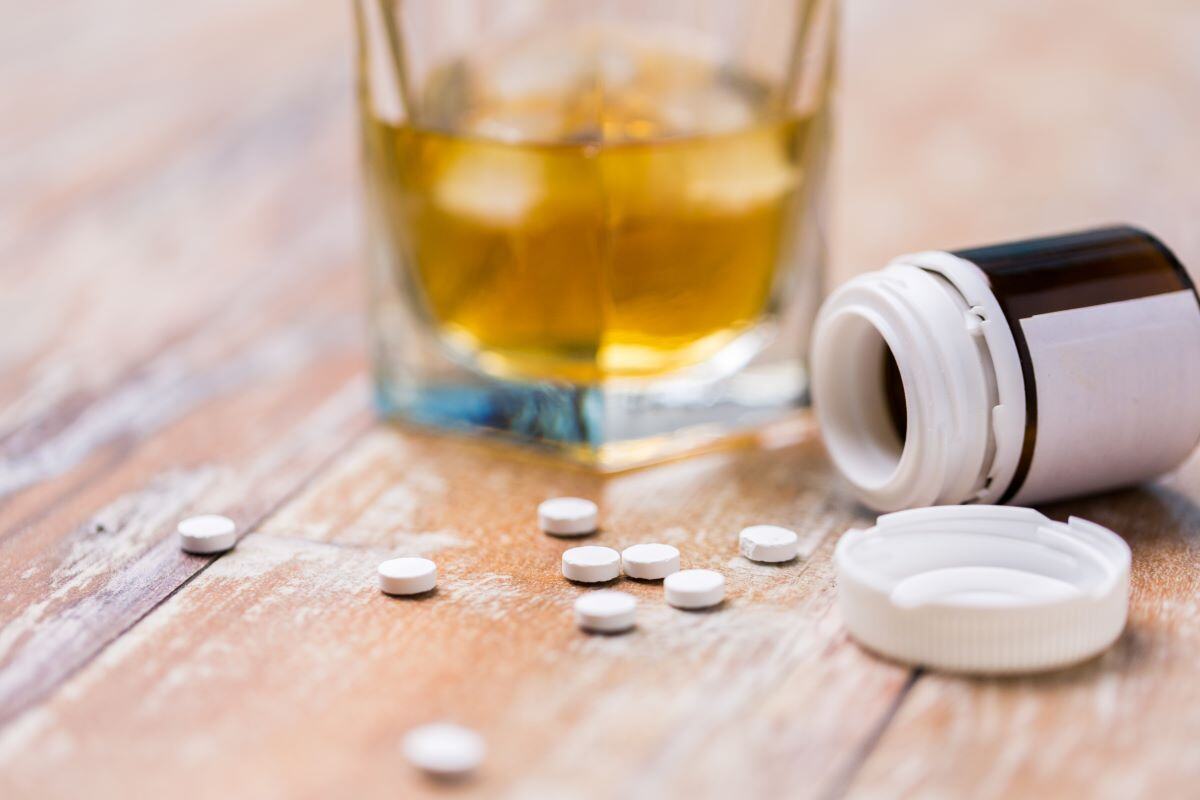Taking tramadol and alcohol together is dangerous because both depress the central nervous system. This combination increases the risk of respiratory depression, coma, and death. Even small amounts of alcohol can intensify tramadol's side effects like dizziness, drowsiness, and impaired motor control.
In this post, Avenues Recovery explores why mixing tramadol and alcohol is harmful, the potential dangers, and common side effects.
What Is Tramadol?
Tramadol is a prescription opioid analgesic used to alleviate moderate to severe pain. It works by binding to opioid receptors in the brain and spinal cord. Tramadol is a Schedule IV drug, which means it is less likely to be abused than other drugs so long as it is used as prescribed.
Prescribed for conditions like post-surgical pain and chronic pain, tramadol comes in various forms. Despite its effectiveness, it carries a risk of abuse, addiction, and side effects, including constipation, dizziness, and nausea. Patients should strictly adhere to prescribed doses, share their medication history with their provider, and be careful not to mix tramadol with gabapentin, other drugs, or alcohol.

Tramadol and Alcohol Side Effects
Here are some effects and dangers of tramadol and alcohol when taken together:
- Central Nervous System Depression: Both tramadol and alcohol slow down the central nervous system. The combined effect can lead to severe drowsiness, dizziness, impaired coordination, and focusing difficulties when taken together.
- Breathing Difficulty (Respiratory Depression): Taking tramadol and alcohol together can result in slowed or shallow breathing. In extreme cases, respiratory depression can cause death.
- Increased Risk of Overdose: Both tramadol and alcohol can impair sound judgment. When used together, individuals may underestimate the effects, leading to higher doses and a greater chance of overdose.
- Impaired Motor Skills: The combination of tramadol and alcohol can weaken motor skills and reaction times, increasing the risk of accidents and injuries.
- Gastrointestinal Effects (Stomach Problems): Tramadol and alcohol can irritate the stomach. Combining them may increase the risk of stomach bleeding and other gastrointestinal issues.
- Sedative Effects: Tramadol has sedative effects, making you tired and slowing your body down. When combined with alcohol, the sedation can be intensified, leading to a higher risk of falls and accidents.
- Risk of Seizures: Tramadol is associated with an increased risk of seizures. Combining it with alcohol may elevate the risk of seizures.
- Increased Liver Toxicity: Both tramadol and alcohol can have harmful effects on the liver. Taking them together may increase the risk of liver damage.

Additional tramadol and alcohol side effects include dizziness and drowsiness, impaired cognitive function, and cardiovascular effects.
If you find yourself mixing tramadol with alcohol to cope with everyday life, please reach out to us at Avenues Recovery so we can guide you on your path to recovery.
What Are the Signs of Someone Mixing Alcohol and Tramadol?
Signs of the tramadol and alcohol interaction include:
- Tiredness
- Difficulty thinking
- Difficulty focusing
- Motor planning inability
These effects can lead to accidents, injuries, and a worsening of mental health symptoms.
Physical symptoms of tramadol and alcohol interacting include:
- Slow or shallow breathing
- Low blood pressure
- Slowed heart rate
- Higher risk of overdose
Behavioral and social signs of mixing tramadol and alcohol include withdrawing from social activities and relationships.
Can Tramadol and Alcohol Kill You?
Yes, you can die from a tramadol and alcohol overdose. Both substances suppress breathing and impair brain function. When combined in high doses, they can cause fatal respiratory depression, unconsciousness, and cardiac arrest. Emergency medical treatment is required immediately.
Naloxone, a medication commonly used to counteract decreased breathing in opioid overdoses, is not effective in reversing tramadol overdoses. Using tramadol with other central nervous system depressants, like alcohol, significantly increases the risk of overdose.

Symptoms of a Tramadol and Alcohol Overdose
Individuals facing an overdose of tramadol and alcohol may exhibit:
- Slow heart rate or loss of consciousness
- Unresponsiveness
- Extreme drowsiness
- Pale skin
- Purple or blue lips and fingernails
If you or a friend are experiencing the above symptoms, call 911 immediately.
Dangerous Conditions Caused by Mixing Tramadol and Alcohol
Combining tramadol and alcohol can lead to a dangerous condition called hypoxia, where vital organs including the brain lack oxygen due to slowed blood circulation. This can result in brain damage over time.
Lack of oxygen to the brain can cause an inhibited ability to:
- Learn
- Focus
- Remember
- Problem solve
Long-term use of alcohol and tramadol increases the chance of someone contracting serious diseases like:
- Cancer
- Cirrhosis of the liver
- Ulcers
- Arteriosclerosis (hardening of arteries, which could lead to a stroke or heart attack)
- Stroke
- Neurological damage potentially leading to dementia
- Kidney failure
Treatment for Alcohol and Tramadol Abuse
Below is a general treatment plan for alcohol and tramadol abuse:
Medical Assessment
Seek immediate medical attention to assess the individual's physical and mental health. Evaluate the extent of alcohol and tramadol use and any potential physical complications.
Detoxification
If needed, consider a medically supervised detoxification at a rehab center like Avenues Recovery to manage withdrawal symptoms safely. Monitor vital signs, provide supportive care, and administer medications if necessary.
Professional Counseling and Therapy
Engage in individual counseling to address underlying issues contributing to substance abuse. Consider behavioral therapies, such as cognitive-behavioral therapy (CBT), to modify destructive thinking and behavior patterns. Family therapy may be beneficial to involve the support system in the recovery process.
Support Groups
Attend support groups such as Alcoholics Anonymous (AA) or Narcotics Anonymous (NA) to connect with others facing similar challenges. Participate in group therapy sessions to share experiences and learn coping strategies.
Medical Management
Work with healthcare professionals to manage any co-occurring mental health disorders that may contribute to substance abuse. Discuss the potential use of medications that may aid in the treatment of alcohol or opioid dependence.
Education
Provide education on the risks and consequences of combined alcohol and tramadol use. Promote awareness of healthier coping mechanisms and stress management techniques.
Lifestyle Changes
Encourage the development of a healthy lifestyle, including regular exercise, proper nutrition, and sufficient sleep. Identify and address triggers that may lead to substance use.
Relapse Prevention
Develop a relapse prevention plan with the guidance of a healthcare professional. Identify coping strategies and skills to manage cravings and stressful situations.
Follow-Up Care
Establish a long-term care plan, including regular follow-up appointments with healthcare professionals. Continue therapy and support group involvement as part of ongoing maintenance.
Social Support
Cultivate a supportive social network that encourages positive behaviors and discourages substance use. Strengthen relationships with friends and family who can provide emotional support.

Your Path to Freedom From Tramadol and Alcohol Addiction
If you or your loved one is suffering from abuse of tramadol and alcohol, know that there is hope. Although it may seem daunting, recovery is entirely possible. At Avenues Recovery, we create personalized treatment plans to tailor to your specific needs. Our dedicated and professional staff have helped thousands of people break free of their addictions, and they can help you too. Contact Avenues to experience high-quality care, understanding staff, and a warm, caring community. We will support you every step of the way to recovery. Reach out to us today, to take your first step towards a happier, healthier, and addiction-free future.
Tramadol and Alcohol FAQs
Can You Drink Alcohol With Tramadol?
Do not drink alcohol while taking tramadol. Combining alcohol with tramadol increases the risk of severe side effects, including respiratory depression, unconsciousness, or death. Both substances depress the central nervous system, and their interaction can be life-threatening even at low doses.
How Long After Taking Tramadol Can I Drink Alcohol?
Wait at least 24 to 48 hours after your last dose of tramadol before drinking alcohol. Tramadol has a half-life of about 6 hours, but its effects may linger longer depending on your metabolism, dosage, and frequency. Drinking too soon increases the risk of sedation, overdose, or respiratory depression.
Can Tramadol and Alcohol Cause Seizures?
Yes, combining tramadol and alcohol can cause seizures. Tramadol lowers the seizure threshold, and alcohol can intensify this effect. The risk increases with higher doses, preexisting conditions, or a history of seizures. Mixing both substances significantly raises the likelihood of convulsions and other neurological side effects.



